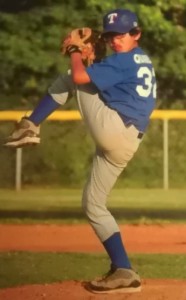 If your child participates in baseball, softball or running, pass these tips along to avoid common injuries and keep them in the game.
If your child participates in baseball, softball or running, pass these tips along to avoid common injuries and keep them in the game.
Baseball and Softball
The most common injury sustained in baseball is damage to the ulnar collateral ligament (UCL), which stabilizes the elbow. Damaging or tearing this ligament requires a difficult recovery process.
For softball players, shoulder tendinitis is common in pitchers who perform the windmill throw. For catchers and players playing other positions, overhead throwing shoulder problems are most common.
To avoid these injuries, be sure to:
- Always warm up by stretching, running, and easy throwing
- Play other positions besides pitcher, and don’t pitch on consecutive days
- Don’t push too hard; Focus on age-appropriate pitching, without using a radar gun
- Avoid pitching on multiple teams with overlapping seasons, or playing year-round
- Don’t pitch when experiencing elbow or shoulder pain, and if the pain persists, see a doctor
- Communicate how your arm is feeling
- Concentrate on control, accuracy, and proper mechanics
- Learn the fastball first and the change-up second, before attempting breaking pitches
Running
Runners are prone to a variety of injuries: knee, pelvic, hip, lower leg, foot and ankle. Running through this pain will only worsen the injury and cause more permanent damage. Additionally, they “run” the risk of heat and skin injuries such as sunburn, skin blisters, heat exhaustion and dehydration.
To avoid these injuries, be sure to:
- Outline the goals for the running program, and make sure they are safe and achievable.
- Hydrate, stretch often and speed up at a slow rate.
- Dress properly: find supportive, comfortable shoes and wear lightweight, breathable attire.
- Avoid running while temperatures are above 90 degrees, humid, or cold or freezing.
- Run in flat locations, or track surfaces.
- Always run with a partner, and stay in well-lit areas.
- Inform your parents you are going running, and avoid headphones to hear oncoming traffic.
If your athlete complains of pain or restricted movement a day after prolonged throwing or running, see a sports medicine professional as soon as possible.
Information provided by the American Orthopedic Society for Sports Medicine.





